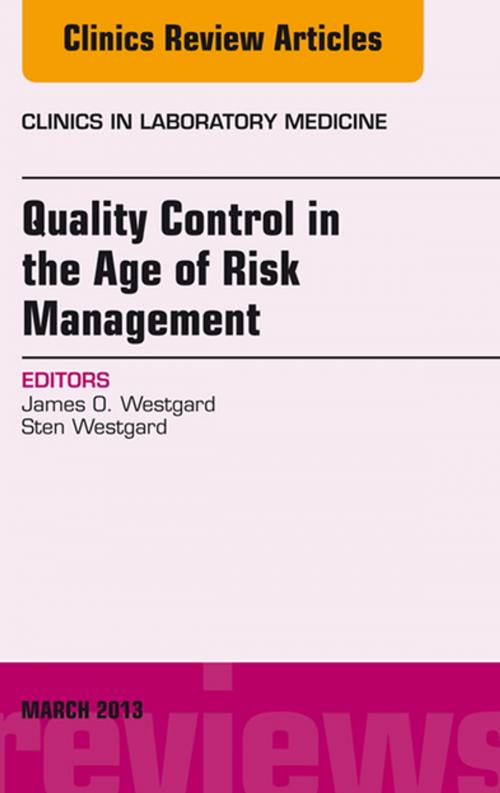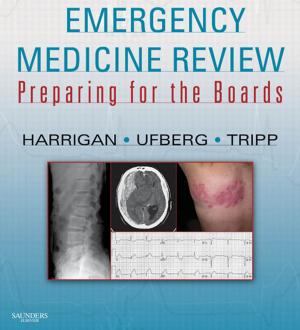Quality Control in the age of Risk Management, An Issue of Clinics in Laboratory Medicine, E-Book
Nonfiction, Health & Well Being, Medical, Specialties, Internal Medicine, Hematology, Pathology| Author: | ISBN: | 9781455772315 | |
| Publisher: | Elsevier Health Sciences | Publication: | October 11, 2011 |
| Imprint: | Elsevier | Language: | English |
| Author: | |
| ISBN: | 9781455772315 |
| Publisher: | Elsevier Health Sciences |
| Publication: | October 11, 2011 |
| Imprint: | Elsevier |
| Language: | English |
In October of 2011, CLSI published a new guideline EP23A on “Laboratory Quality Control Based on Risk Management. In March, 2012, CMS announced its intention to incorporate key concepts from EP23A into its Interpretative Guidelines and QC policy for “Individualized Quality Control Plans. Thus begins a new era of Quality Control in the Age of Risk Management. This issue is intended to help laboratories with the transition between traditional QC practices and the new risk management approach. Laboratories face a steep learning curve to apply risk analysis for identifying and prioritizing failure-modes, developing and implementing control mechanisms to detect those failure-modes, and assessing the acceptability of the residual risks that exist after implementation of a QC Plan. One of the main benefits of the new risk analysis based QC Plans should be an integration of all the control mechanisms that are needed to monitor the total testing process, including pre-analytic, analytic, and post-analytic controls. One of the main risks of the new approach is an expectation that Statistical QC is no longer important, even though SQC still remains the most useful and flexible approach for monitoring the quality of the analytic process. The key to the future is the successful integration of all these control mechanisms to provide a cost-effective quality system that monitors all phases of the total testing process. This issue should help laboratories understand the evolution of QC practices to include risk management, but also to recognize the need to maintain traditional techniques such as Statistical QC, especially during the transition to well-designed and carefully-validated QC Plans. Risk analysis may be risky business unless laboratories proceed carefully and cautiously.
In October of 2011, CLSI published a new guideline EP23A on “Laboratory Quality Control Based on Risk Management. In March, 2012, CMS announced its intention to incorporate key concepts from EP23A into its Interpretative Guidelines and QC policy for “Individualized Quality Control Plans. Thus begins a new era of Quality Control in the Age of Risk Management. This issue is intended to help laboratories with the transition between traditional QC practices and the new risk management approach. Laboratories face a steep learning curve to apply risk analysis for identifying and prioritizing failure-modes, developing and implementing control mechanisms to detect those failure-modes, and assessing the acceptability of the residual risks that exist after implementation of a QC Plan. One of the main benefits of the new risk analysis based QC Plans should be an integration of all the control mechanisms that are needed to monitor the total testing process, including pre-analytic, analytic, and post-analytic controls. One of the main risks of the new approach is an expectation that Statistical QC is no longer important, even though SQC still remains the most useful and flexible approach for monitoring the quality of the analytic process. The key to the future is the successful integration of all these control mechanisms to provide a cost-effective quality system that monitors all phases of the total testing process. This issue should help laboratories understand the evolution of QC practices to include risk management, but also to recognize the need to maintain traditional techniques such as Statistical QC, especially during the transition to well-designed and carefully-validated QC Plans. Risk analysis may be risky business unless laboratories proceed carefully and cautiously.















